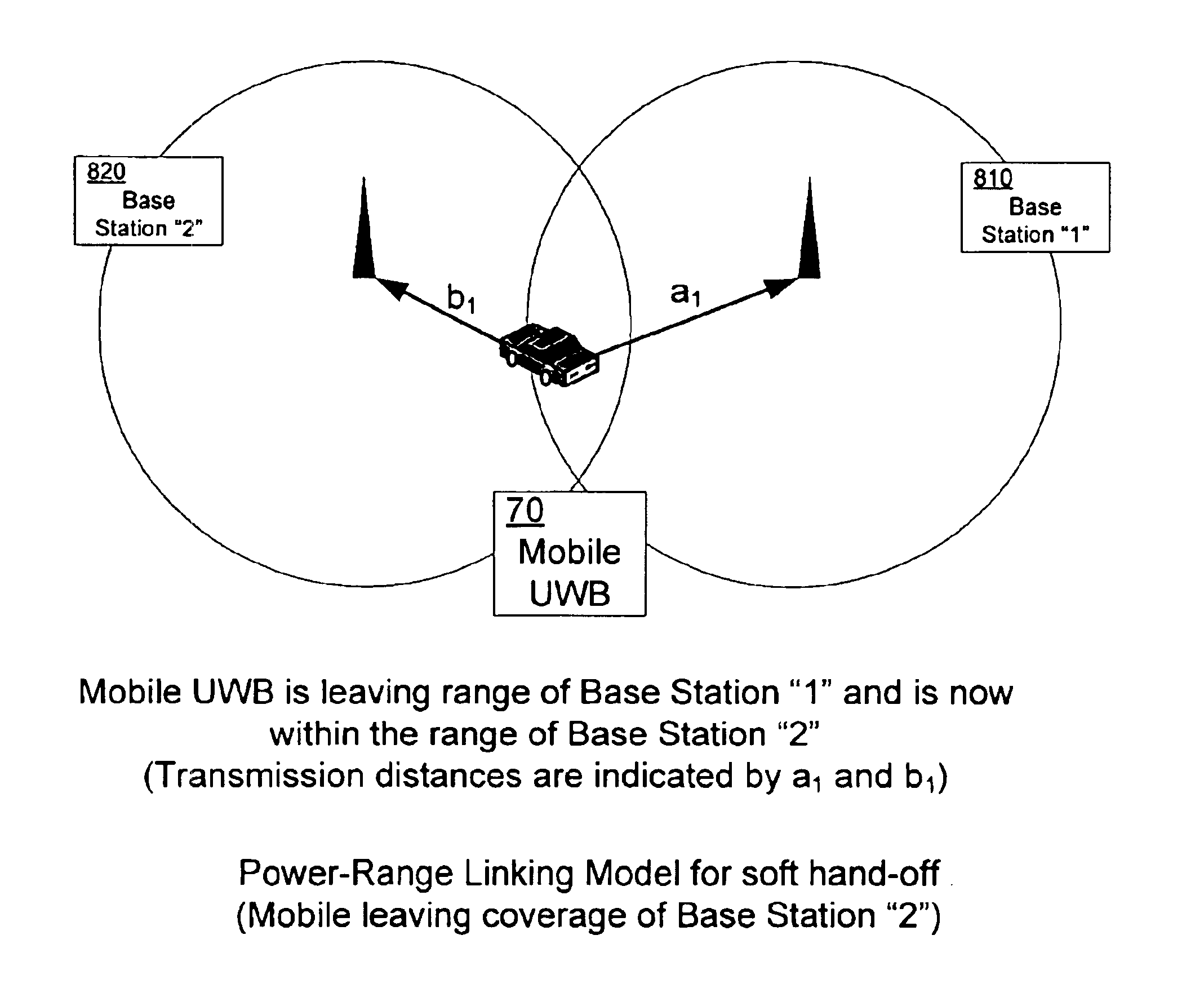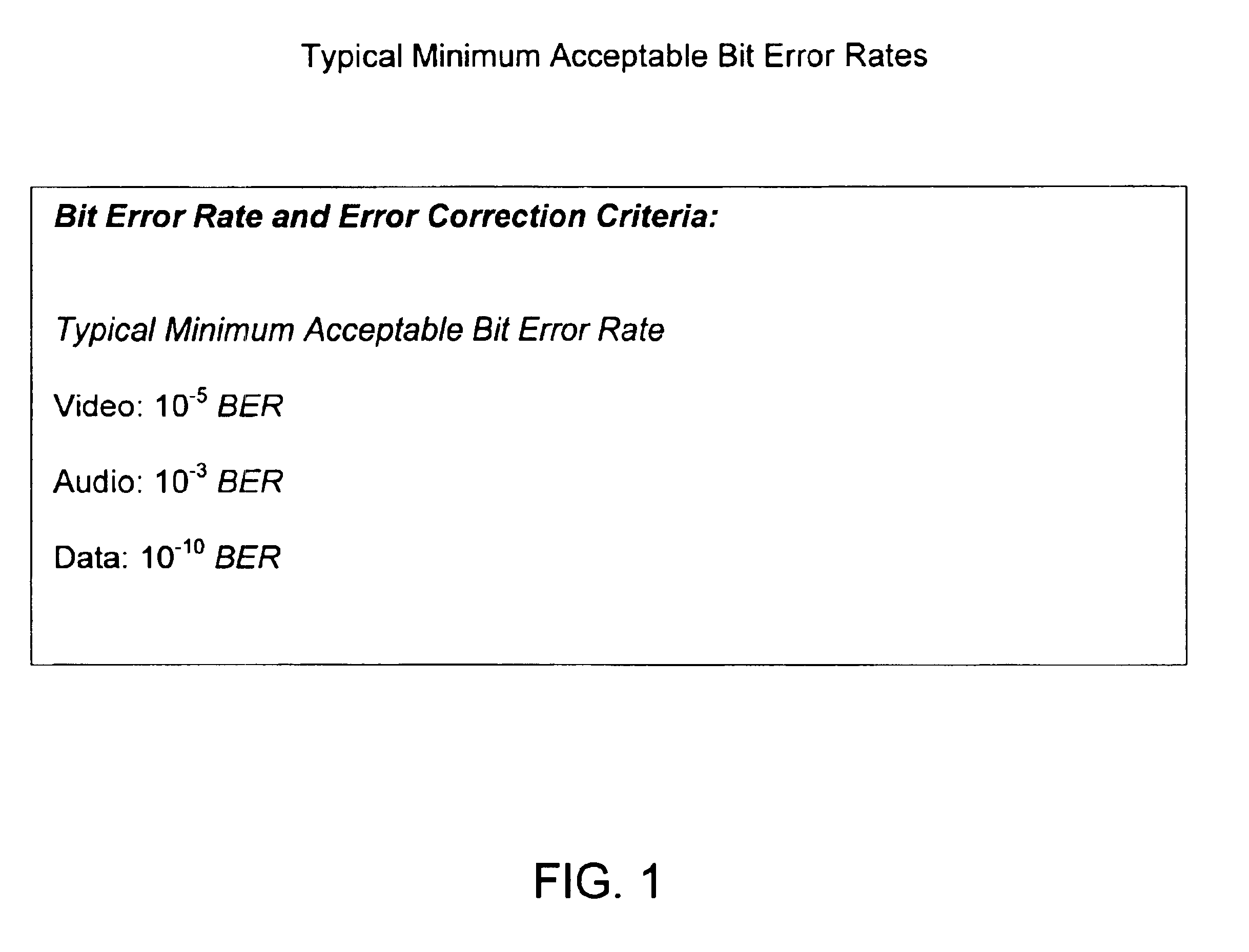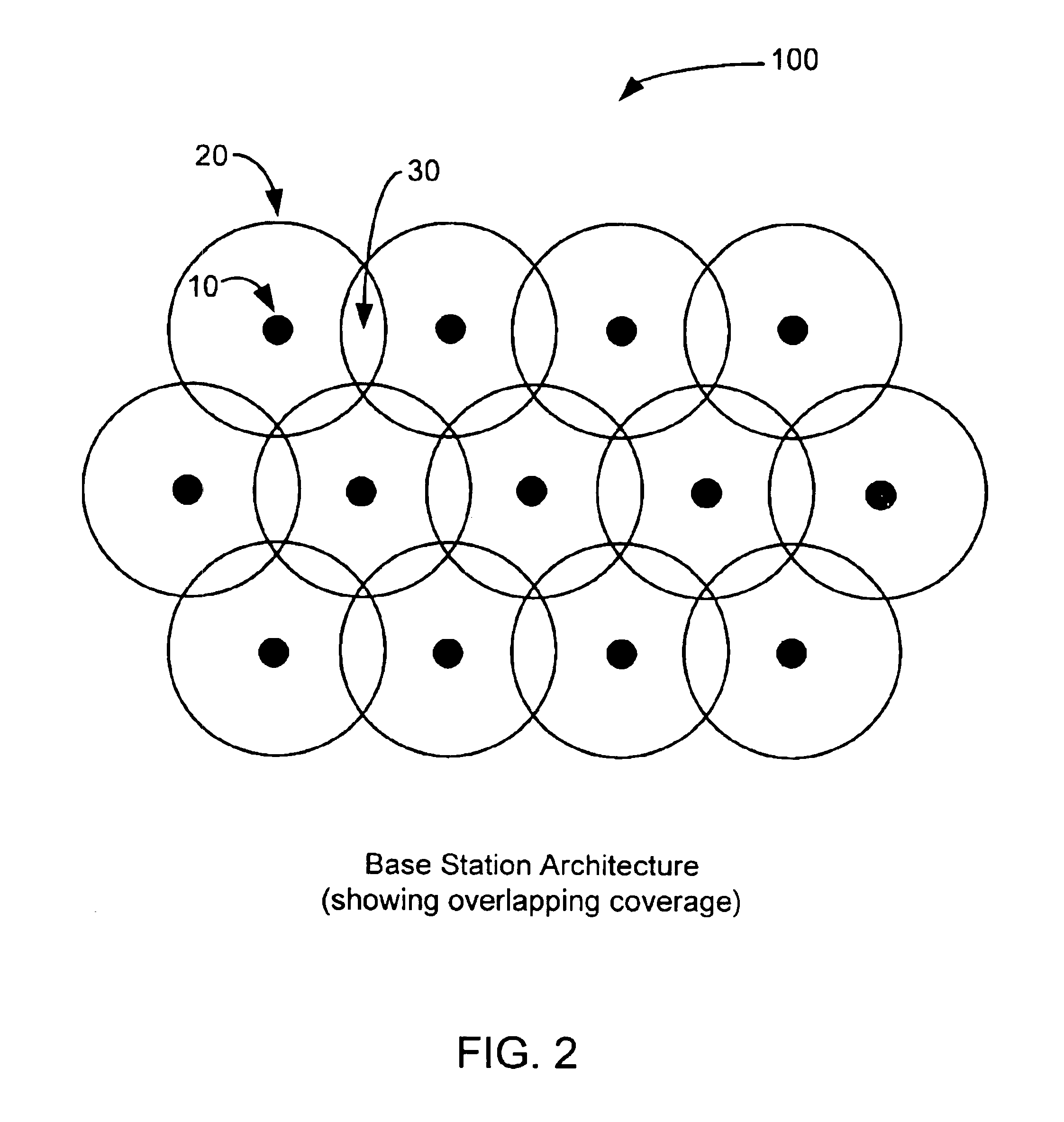Hand-off between ultra-wideband cell sites
a cell site and ultra-wideband technology, applied in the field of ultra-wideband communication systems, can solve the problems of large amount of data sent on both wide area and local communication systems, large amount of bandwidth available in traditional communication bands, and large amount of generated pulses, etc., to achieve effective linkage and maintain an acceptable level of service and coverage, and efficiently utilize bandwidth and system resources
- Summary
- Abstract
- Description
- Claims
- Application Information
AI Technical Summary
Benefits of technology
Problems solved by technology
Method used
Image
Examples
Embodiment Construction
[0036]In the following paragraphs, the present inventions will be described in detail by way of example with reference to the attached drawings. Throughout this description, the preferred embodiment and examples shown should be considered as exemplars, rather than as limitations on the present invention. As used herein, “the present invention” refers to any one of the embodiments of the invention described herein.
I. Soft Hand-Off and Mobile Ultra-Wideband Dynamic Linking Architecture
[0037]FIG. 2 illustrates a preferred base station 10 hexagonal topology 100 that will provide overlapping coverage 30 for ultra-wideband base stations 10. Other configurations may also be used, such as a micro pico-network on a daisy chain backbone, placed like emergency call boxes along a highway, for separate routing of signals, but this configuration will allow an effective soft hand-off, which is essential for code-based cellular communications. Base station topologies can be hexagonal or linear. The...
PUM
 Login to View More
Login to View More Abstract
Description
Claims
Application Information
 Login to View More
Login to View More - R&D
- Intellectual Property
- Life Sciences
- Materials
- Tech Scout
- Unparalleled Data Quality
- Higher Quality Content
- 60% Fewer Hallucinations
Browse by: Latest US Patents, China's latest patents, Technical Efficacy Thesaurus, Application Domain, Technology Topic, Popular Technical Reports.
© 2025 PatSnap. All rights reserved.Legal|Privacy policy|Modern Slavery Act Transparency Statement|Sitemap|About US| Contact US: help@patsnap.com



